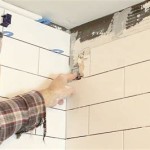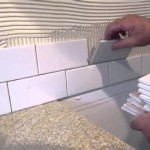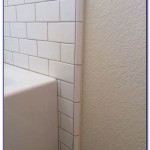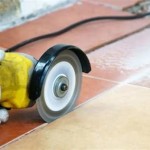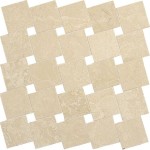Can You Put Luxury Vinyl Plank Flooring Over Tile Floor?
Luxury vinyl plank (LVP) flooring is a popular choice for homeowners due to its durability, water resistance, and affordability. Its installation process is often perceived as simpler than other flooring types, leading many to wonder about its compatibility with existing flooring, particularly tile. This article explores the feasibility and considerations of installing LVP over tile flooring.
Key Considerations for Installing LVP over Tile
Several factors influence the success of installing LVP over tile. Evaluating these aspects is crucial for a long-lasting and aesthetically pleasing result.
1. Tile Condition: The existing tile must be in good condition, free from cracks, chips, or loose grout. Any imperfections can telegraph through the LVP, causing unevenness and potential damage. Thoroughly inspect the entire tiled area for any signs of damage before proceeding.
2. Grout Lines: Deep or wide grout lines can also create problems. While thinset can fill minor imperfections, significantly deep grout lines may require additional leveling compound to create a smooth surface. The LVP manufacturer's recommendations regarding acceptable grout line depth should be consulted.
3. Cleanliness: The tile surface must be meticulously cleaned to remove any dirt, grease, or residue that might interfere with the adhesion of the underlayment or the LVP itself. A thorough cleaning with a suitable degreaser is recommended.
4. Moisture: Moisture issues beneath the tile can lead to mold and mildew growth, affecting the new flooring. Ensure there are no pre-existing moisture problems before installing LVP.
5. Subfloor Stability: The subfloor beneath the tile should be stable and level. Any movement or deflection in the subfloor can transfer to the LVP, causing it to buckle or separate over time.
6. Type of LVP: Different LVP products have varying installation requirements. Some are designed for glue-down installation, while others feature a click-lock system. The chosen LVP type will determine the necessary preparation steps.
7. Height Considerations: Adding LVP over existing tile raises the floor height. This can affect transitions to other rooms, doorways, and appliance clearances. Carefully measure and account for the added height to avoid issues.
Preparing the Tile Floor for LVP Installation
Proper preparation is essential for a successful LVP installation over tile. Neglecting these steps can compromise the longevity and appearance of the new floor.
1. Repairing Damage: Any damaged tiles or grout should be repaired before installing LVP. Replace cracked tiles and fill any chips or holes with a suitable patching compound.
2. Leveling the Surface: Use a leveling compound to create a smooth and even surface, especially over deep grout lines or uneven areas. This provides a stable base for the LVP and prevents telegraphing of imperfections.
3. Cleaning and Degreasing: Thoroughly clean the tile surface with a degreaser to remove any dirt, grease, or residue that might interfere with adhesion.
4. Applying Underlayment (If Necessary): Some LVP products require an underlayment, which provides cushioning, sound insulation, and moisture protection. Follow the manufacturer's instructions regarding underlayment requirements.
Installation Methods for LVP over Tile
The installation method depends on the type of LVP chosen.
1. Click-Lock LVP: Click-lock LVP planks interlock with each other, creating a floating floor. This method generally doesn't require adhesive and can be installed directly over the prepared tile surface.
2. Glue-Down LVP: Glue-down LVP requires adhesive to bond the planks to the tile surface. This method provides a more permanent installation and is often recommended for high-traffic areas.
3. Underlayment Considerations: The use and type of underlayment can impact the installation process. Some underlayments are designed for specific LVP types, while others are more versatile. Always consult the manufacturer's recommendations.
Long-Term Considerations for LVP over Tile
While installing LVP over tile is often feasible, certain long-term implications should be acknowledged.
1. Resale Value: While LVP generally increases a home's value, layering it over existing tile might raise concerns for future buyers who prefer the original tile or question the quality of the installation.
2. Maintenance: LVP requires regular cleaning and maintenance to preserve its appearance and longevity. Avoid harsh chemicals and abrasive cleaners that could damage the flooring.
3. Durability: LVP is generally durable, but its lifespan can be affected by the quality of the installation and the underlying tile's condition. Proper preparation and installation are crucial for maximizing its durability.
Seeking Professional Advice
Consulting with a qualified flooring professional is advisable before installing LVP over tile. They can assess the existing tile's condition, the subfloor's stability, and recommend the best course of action for a successful and long-lasting installation.

New Vinyl Plank Flooring Over Tile Table And Hearth

New Vinyl Plank Flooring Over Tile Table And Hearth

New Vinyl Plank Flooring Over Tile Table And Hearth

New Vinyl Plank Flooring Over Tile Table And Hearth

Can You Install Vinyl Plank Over Tile Flooring America

Should You Install Vinyl Floor Over Tile

Can You Put Laminate Or Vinyl Plank Flooring Over Tile

New Vinyl Plank Flooring Over Tile Table And Hearth

Can Vinyl Flooring Be Laid Over Laminate Go For Floors

Best Vinyl Flooring To Install Over Tile Plank Snap Together
Related Posts

